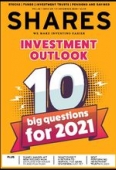Archived article
Please note that tax, investment, pension and ISA rules can change and the information and any views contained in this article may now be inaccurate.
How to navigate an annual report (and why it is full of great information)

Each year every company listed on the UK stock market must publish its annual report and accounts on its website. These documents can be lengthy, even running to hundreds of pages, but they can also be a superb way to help gain a greater understanding of a business.
In this article we will show you how to tackle an annual report. We examine some of the most important sections and look at a real-world example from Next (NXT) which is rated as one of the best communicators on the stock market.
An annual report is typically published a few weeks or months after preliminary results (often called full-year results). These results are ‘preliminary’ because they are released before the full annual report.
GETTING STRATEGIC
A series of changes to the annual report in the 2010s means these are now far more than just a profit and loss account, covering areas from sustainability to executive pay, strategy and much more.
Specifically, from 2013 firms have had to produce a ‘strategic report’ providing an update on:
– The development and performance of the company’s business during the financial year.
– The position of the company at the end of the year.
– A description of the principal risks and uncertainties facing the business.
It must also include a list of both financial and non-financial key performance indicators (KPIs) and details on the firm’s strategy and operating model.
From the start of 2019 boards have also been required to include a further statement within their strategic report, describing how they have incorporated several factors into running the business.
Broadly, these include the likely consequences of any decisions in the longer term, the interests of employees and the need to foster business relationships, the impact of the company’s activities on the environment, the desirability of high standards of business conduct and the need to act fairly between different members of the company.
GETTING INTO THE DETAIL
Often annual reports will provide useful breakdowns of a company’s revenue by sector and geography enabling you to get an idea of how reliant they are on certain markets.
The remuneration report is another important element for investors to peruse given it shows how much directors are being paid to manage the company and the policy which justifies these pay packets. A company lavishing huge sums on senior directors is arguably frittering away money which could be better spent elsewhere.
With the accounts themselves, the devil can be in the detail. It is well worth some time going over the notes to these statements, particularly if there are lots of differences between the statutory and adjusted revenue and profit. These can reveal if the adjustments are reasonable changes to give a true picture of underlying performance or an attempt to pull the wool over the eyes of the market.
Just as with all forms of shareholder communication the quality and breadth of information contained within these reports can vary quite widely. There is a big difference between publications containing the bare minimum and those which go the extra mile to help provide genuine insight into the business.
NEXT – the gold standard
Retailer Next has a well-earned reputation for transparency and clarity when communicating with investors and its annual report for the financial year to January 2020 was no exception.
Notably it included a large section detailing its response to the coronavirus pandemic – an event which came after the period covered by the accounts themselves.
A section on warehousing capacity to fulfil online orders showed the amount of detail on offer. It revealed how long it took staff to pick items compared with a decade ago and planned changes to increase its efficiency – including through training and new software.
Investors reading the statement could be in no doubt that Next was taking the challenge of meeting major structural challenges in retail (accelerated by the pandemic) very seriously.
Important information:
These articles are provided by Shares magazine which is published by AJ Bell Media, a part of AJ Bell. Shares is not written by AJ Bell.
Shares is provided for your general information and use and is not a personal recommendation to invest. It is not intended to be relied upon by you in making or not making any investment decisions. The investments referred to in these articles will not be suitable for all investors. If in doubt please seek appropriate independent financial advice.
Investors acting on the information in these articles do so at their own risk and AJ Bell Media and its staff do not accept liability for losses suffered by investors as a result of their investment decisions.
Issue contents
First-time Investor
Great Ideas
Great Ideas Update
Investment Trusts
Money Matters
News
- Surge in Airbnb and DoorDash stock renews tech bubble debate
- Marketing of high-risk mini-bonds banned from 2021
- Why aren’t investors cheering AstraZeneca’s bid for Alexion?
- Aberdeen Standard snares Tritax as logistics property boom continues
- Disney shares hit new record high on plans for major TV and film push
- Iron ore trumps gold as the hot commodity of 2020
 magazine
magazine










